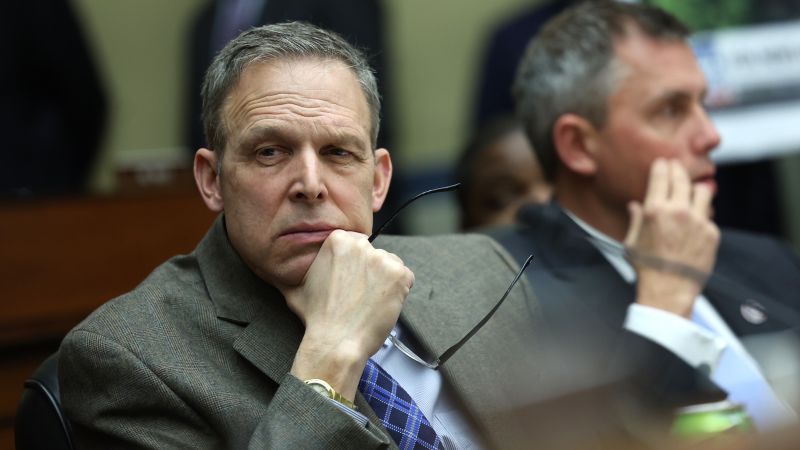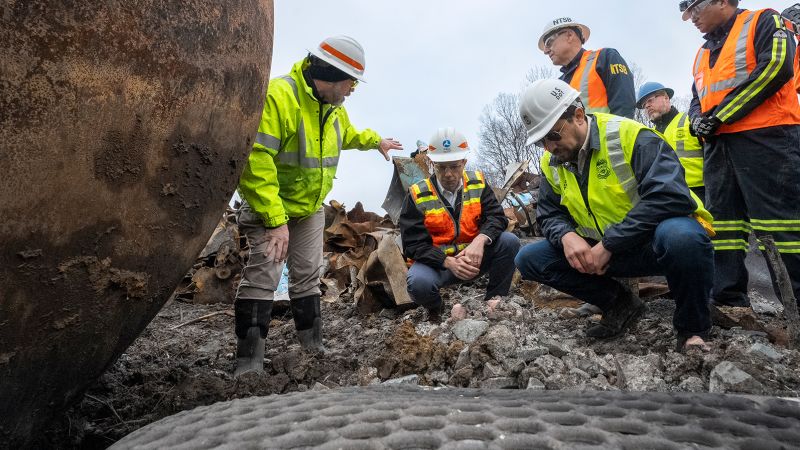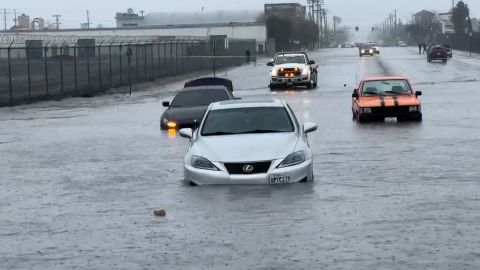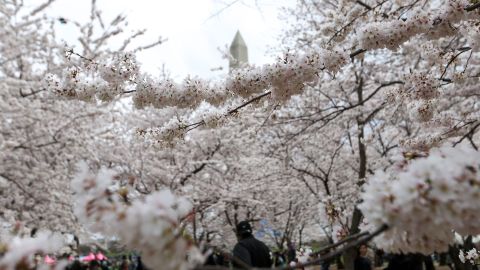CNN
—
After federal officials released an initial report concluding that this month’s toxic train wreck in Ohio was completely preventable, investigators will begin examining procedures, practices and design prior to the derailment that has sparked long-term concerns among hundreds of frustrated residents.
The National Transportation Safety Board on Thursday released its preliminary report on the investigation into the February 3 train crash in East Palestine, Ohio, where residents have been complaining about feeling sick after hazardous chemicals seeped into the air, water and soil.
Ohio environmental officials made a civil referral this week asking the state attorney general’s office to begin “legal and/or equitable civil actions” against train operator Norfolk Southern, which could result in a civil complaint if negotiations with the company were to fail.
The NTSB report found that one of the train’s cars carrying plastic pellets was heated by a hot axle that sparked the initial fire, according to Jennifer Homendy, the chair of the safety board. As the temperature of the bearing got hotter, the train passed by two wayside defect detectors that did not trigger an audible alarm message because the heat threshold was not met at that point, Homendy explained. A third detector eventually picked up the high temperature, but it was already too late by then.
“This was 100% preventable. … There is no accident. Every single event that we investigate is preventable,” Homendy said during a news conference Thursday. “The NTSB has one goal, and that is safety and ensuring that this never happens again.”
The next phase of the investigation will examine the train’s wheelset and bearing as well as the damage from the derailment, the NTSB report noted. The agency will also focus on the designs of tank cars and railcars along with maintenance procedures and practices.
Plus, investigators will review the train operator’s use of wayside defect detectors and the company’s railcar inspection practices. More specifically, determining what caused the wheel bearing failure will be key to the investigation, Homendy said.
On Friday, Homendy said on “CNN This Morning” that she’s concerned politics could cloud the investigation and prevent safety improvements. Former President Donald Trump visited the site of the train derailment on Wednesday where he criticized President Joe Biden’s administration’s handling of the railway disaster.
“This is not a time for politics,” Homendy said. “There is a time for politics. It is not this.”
On Thursday, Transportation Secretary Pete Buttigieg also visited the derailment site, and when asked how political figures like Trump could help, Buttigieg addressed the former president directly saying he could “express support for reversing the deregulation that happened on his watch.”
Another key aspect of the investigation will focus on the response to the chemical disaster, particularly the manual detonations of tanks carrying toxic chemicals.
Five of the 38 derailed train cars were carrying more than 115,000 gallons of vinyl chloride, according to the NTSB’s report. Exposure to high levels of vinyl chloride can increase cancer risk or cause death.
Those five cars “continued to concern authorities because the temperature inside one tank car was still rising,” indicating a polymerization reaction which could have resulted in an explosion, the report said. To help prevent a potentially deadly blast of vinyl chloride, crews released the toxic chemical into a trench and burned it off on February 6 — three days after the derailment.
Since then, some East Palestine residents have said they are experiencing headaches, dizziness, nausea and bloody noses — a host of health issues they say they did not have prior to the crash.
At the same time, officials have been adamant in reassuring residents of the air’s safety and the municipal water supply.
Around 2 million gallons of firefighting water from the train derailment site are expected to be disposed in Harris County, Texas, according to the county’s chief executive.
Harris County Judge Lina Hidalgo said her office was told by Texas Molecular on Thursday that the shipments began arriving around last Wednesday, she said.
Texas Molecular was hired to dispose of the potentially dangerous water from the train derailment, the company, which said it has more than four decades of experience in managing water safely, has told CNN.
The company told Hidalgo’s office Thursday that half a million gallons were already in the county.
Hidalgo expressed frustration that she first learned about the water shipments from the news media – not from a government agency or Texas Molecular.
“It’s a very real problem we were told yesterday the materials were coming only to learn today they’ve been here for a week,” Hidalgo said.
She added that although there’s no legal requirement for her office to be notified, “It doesn’t quite seem right.”
Texas Molecular is receiving the water from trucks, but it’s unclear if trucks are used for the entire trip, Hidalgo said. The company told her office they’re receiving about 30 trucks of water a day, she said.
CNN is seeking comment from Texas Molecular about how the water is being transported.
Hidalgo said her office is looking for information about the disposal, including the chemical composition of the firefighting water, the precautions that are being taken, and why Harris County was the chosen site.
“There’s nothing right now to tell me – to tell us – there’s going to be an accident in transport, that this is being done in such a way that is not compatible with the well, that there’s a nefarious reason why the water is coming here and not to a closer site,” Hidalgo said. “But it is our job to do basic due diligence on that information.”
A total of 1.7 million gallons of contaminated liquid have been removed from the immediate site of the derailment, according to a Thursday news release from the Ohio Emergency Management Agency.
More than 1.1 million gallons of “contaminated liquid” from East Palestine have been transported off-site so far, with the majority going to Texas Molecular and the rest going to a facility in Vickery, Ohio.
CNN has asked the Ohio agency the location of the remaining 581,500 gallons, which have been “removed” but not “hauled off-site.”
Congresswoman Debbie Dingell of Michigan said she was “not given a heads up” that contaminated soil from East Palestine would be transported to the US Ecology Wayne Disposal in Belleville, Michigan.
“We were not given a heads up on this reported action,” Dingell said in a press release on Friday, “Our priority is to always keep the people we represent safe.”
Dingell said inquires to the EPA, Department of Transportation, Norfolk Southern, US Ecology, the state of Ohio and others involved are in the process.
On Friday afternoon, Ohio Gov. Mike DeWine released an update on the removal of the contaminated site in East Palestine, saying that soil would be transported to Michigan.
So far, 4,832 cubic yards of soil have been removed from the ground in East Palestine. Approximately six truckloads of that contaminated soil are on their way to the hazardous waste disposal facility in Michigan, according to a news release from DeWine.
The 149-car train operated by Norfolk Southern on February 3 had three employees on board: a locomotive engineer, a conductor and a trainee who were all in the head end of the locomotive, Homendy told CNN’s Jake Tapper on Thursday.
So far, the investigation found the crew did not do anything wrong prior to the derailment, though the crash was “100% preventable,” Homendy said.
Video of the train before the derailment showed what appeared to be an overheated wheel bearing, according to the NTSB report. Footage showed sparks flying from underneath the train.
NTSB investigators are now focusing on one train car’s wheel set and bearing to figure out what may have caused the overheating, Homendy said.
“We have a lot of questions about that,” she said Friday, including the “thresholds and why they vary so much between railroads.”
Ultimately, it’s the railroads that set the temperature thresholds for the detectors, Homendy said.
Releasing publicly a probable cause or causes for the derailment could take 12 to 18 months, Homendy said during the news conference.
“We are very deliberative. We are the gold standard when it comes to investigations globally, and we are methodical in our approach,” Homendy said. “But if we see a safety issue that we need to be addressed immediately, something systemic, we will not hesitate to issue an urgent safety recommendation.”
In the meantime, here’s what the NTSB preliminary report found so far:
- One wheel bearing’s temperature reached a “critical” level — 253 degrees Fahrenheit above the ambient temperature — and prompted an audible alarm that instructed “the crew to slow and stop the train to inspect a hot axle,” the report says.
- The train’s engineer applied the train’s brakes and additional braking after the alert of an overheating axle, the report states. “During this deceleration, the wheel bearing failed,” Homendy explained. “Car 23 derailed, and the train initiated an emergency brake application and came to a stop.”
Even after reading the preliminary NTSB report, Ohio Attorney General Dave Yost told “CNN This Morning” that there’s still a lot of facts he doesn’t know.
Among his biggest questions are: “Had the train been shorter, had there been additional staff, could this have been averted? Based on the alerts that occurred, how long is the reaction time and how is that influenced by the size of the train?” Yost told CNN.
The US Environmental Protection Agency has ordered Norfolk Southern to cover the full cost of cleaning up the aftermath of the train crash.
“EPA has special authority for situations just like this where we can compel companies who inflict trauma and cause environmental and health damage to communities, like Norfolk Southern has done, to completely clean up the mess that they’ve caused and pay for it,” EPA administrator Michael Regan said.
Norfolk Southern will be required to:
- Provide a descriptive work plan on how they intend to clean up the water, soil and debris
- Reimburse the EPA for providing residents a cleaning service of their homes and businesses
- Show up to public meetings and explain their progress
If the company does not follow the order, the EPA will step in to complete the duties, while fining Norfolk Southern up to $70,000 a day, Regan said Wednesday during a CNN town hall.
“And the law gives us the authority to charge Norfolk Southern up to three times the amount that the cleanup will cost us,” he said.
The company plans to take a series of measures moving forward to minimize the long-term impacts of chemicals on the land and groundwater, including ripping up the tracks where the train derailed and removing soil underneath, Norfolk Southern CEO Alan Shaw said.
Shaw added his company is working with the Environmental Protection Agency on a “long-term remediation plan.”
Yost, who received the referral from the Ohio EPA to initiate necessary legal civil actions against Norfolk Southern this week, told CNN any criminal referral in Ohio regarding the derailment would be a decision made by local prosecutors.
“We’ve been in contact with the local county prosecutor, and … we may be assisting him, but at this point, he has not empaneled a grand jury, to my understanding,” he said Friday on “CNN This Morning.”
Ohio environmental officials made a civil referral Tuesday asking Yost’s office to “initiate all necessary legal and/or equitable civil actions” and “seek appropriate penalties” against Norfolk Southern, according to a copy of the referral provided by the attorney general’s office.
“I respectfully request that this referral result in the filing of a civil complaint in the appropriate court if efforts on your part to resolve this matter through negotiation fail,” Ohio Environmental Protection Agency Director Anne Vogel wrote in a letter to Yost.
Vogel cited potential violations of state laws regarding air and water pollution and solid and hazardous waste.
Expanding the definition of a high-hazard flammable train – a standard the derailed train did not meet, despite sparking a major fire – is among the changes NTSB advocated for in the past, Homendy said Friday.
NTSB urged regulators to include in the classification “a broad array of flammable materials,” rather than focusing on crude oil, she said.
Additionally, NTSB will look at whether vinyl chloride needs to be carried in more fortified cars, Homendy said.





















